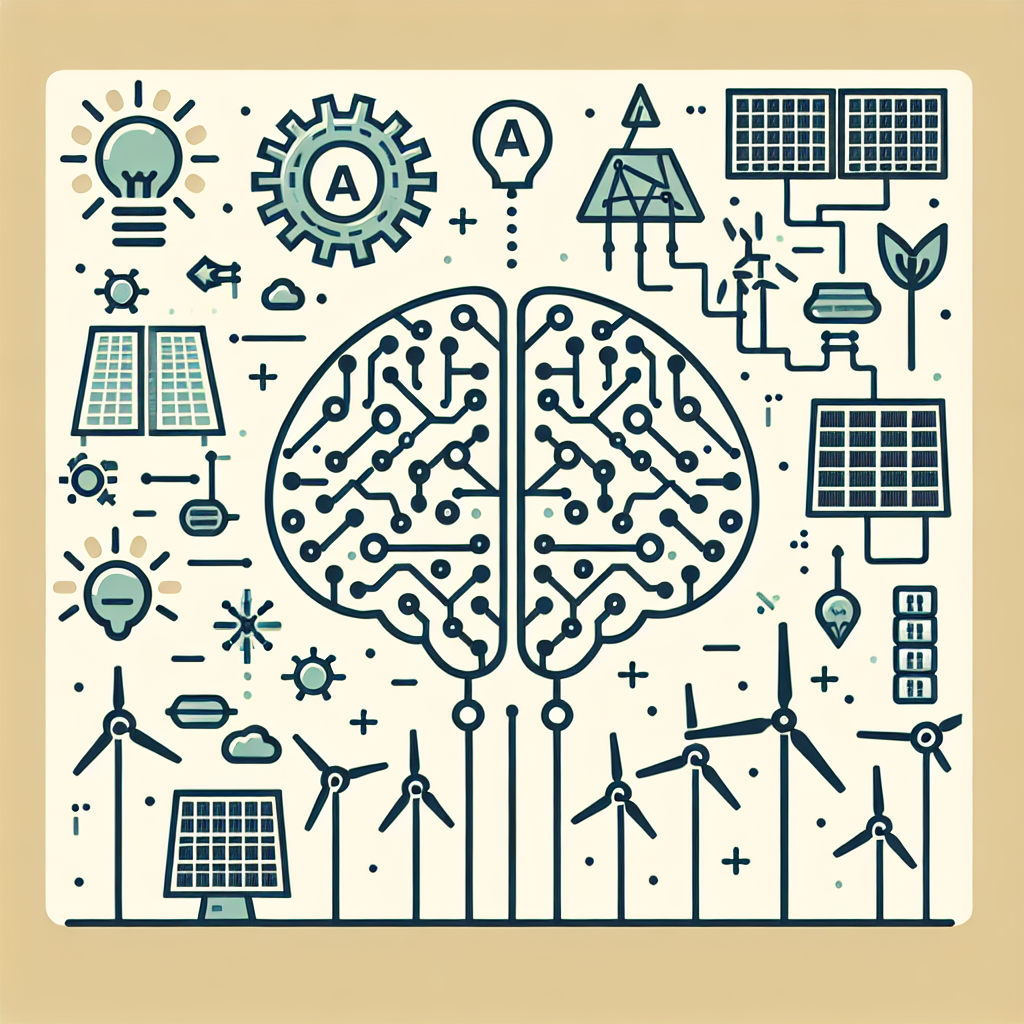The Benefits of AI in Renewable Energy Planning
Renewable energy sources, such as solar, wind, and hydro power, are becoming increasingly important in the fight against climate change and the transition to a more sustainable energy system. However, integrating these intermittent energy sources into the grid can be a complex process that requires careful planning and coordination. This is where artificial intelligence (AI) comes in.
AI technologies, such as machine learning algorithms and predictive analytics, can help optimize the planning and operation of renewable energy systems, making them more efficient, reliable, and cost-effective. In this article, we will explore the benefits of AI in renewable energy planning and how it is shaping the future of clean energy.
1. Improved Forecasting
One of the key challenges of integrating renewable energy sources into the grid is their intermittent nature. Solar and wind power generation fluctuates depending on weather conditions, making it difficult to predict how much energy will be generated at any given time. AI technologies can help improve forecasting accuracy by analyzing historical data, weather patterns, and other relevant factors to predict future energy production more accurately.
By using AI-powered forecasting tools, energy operators can better anticipate fluctuations in renewable energy generation and adjust their grid operations accordingly. This can help reduce the need for backup power sources and minimize the risk of blackouts or grid instability.
2. Optimal Resource Allocation
AI can also help optimize the allocation of renewable energy resources by analyzing data on energy demand, generation capacity, and grid constraints. By using machine learning algorithms, energy planners can identify the most efficient ways to deploy renewable energy sources and maximize their output.
For example, AI can help determine the best locations for solar panels or wind turbines based on factors such as sunlight exposure, wind speed, and grid connectivity. This can help energy operators make more informed decisions about where to invest in renewable energy infrastructure and how to best utilize existing resources.
3. Energy Storage Optimization
Another key benefit of AI in renewable energy planning is its ability to optimize energy storage systems. Energy storage is essential for balancing supply and demand in renewable energy systems, especially when generation is intermittent. AI technologies can help predict energy storage needs, optimize charging and discharging schedules, and improve overall system efficiency.
By using AI-powered energy management systems, energy operators can better control energy storage systems, reduce costs, and maximize the utilization of renewable energy sources. This can help increase the reliability and resilience of renewable energy systems and reduce their environmental impact.
4. Cost Reduction
AI can also help reduce the costs of renewable energy planning and operation by automating repetitive tasks, optimizing processes, and improving decision-making. By using AI technologies, energy operators can streamline their operations, reduce human error, and increase overall efficiency.
For example, AI can help optimize maintenance schedules for renewable energy infrastructure, predict equipment failures before they occur, and identify opportunities for cost savings. This can help reduce operational expenses, increase profitability, and make renewable energy more competitive with traditional fossil fuels.
5. Environmental Benefits
In addition to economic benefits, AI can also help improve the environmental performance of renewable energy systems. By optimizing energy production, storage, and distribution, AI technologies can help reduce greenhouse gas emissions, minimize environmental impacts, and promote sustainable development.
AI can also help optimize energy use in buildings, transportation, and other sectors, further reducing carbon emissions and promoting the transition to a low-carbon economy. By harnessing the power of AI, we can accelerate the adoption of renewable energy sources and reduce our reliance on fossil fuels.
FAQs
Q: How does AI improve forecasting accuracy in renewable energy systems?
A: AI technologies use machine learning algorithms to analyze historical data, weather patterns, and other relevant factors to predict future energy production more accurately. By using AI-powered forecasting tools, energy operators can better anticipate fluctuations in renewable energy generation and adjust their grid operations accordingly.
Q: How can AI help optimize energy storage systems in renewable energy systems?
A: AI technologies can help predict energy storage needs, optimize charging and discharging schedules, and improve overall system efficiency. By using AI-powered energy management systems, energy operators can better control energy storage systems, reduce costs, and maximize the utilization of renewable energy sources.
Q: What are the environmental benefits of using AI in renewable energy planning?
A: AI can help reduce greenhouse gas emissions, minimize environmental impacts, and promote sustainable development by optimizing energy production, storage, and distribution. By harnessing the power of AI, we can accelerate the adoption of renewable energy sources and reduce our reliance on fossil fuels.
In conclusion, AI technologies have the potential to revolutionize the planning and operation of renewable energy systems, making them more efficient, reliable, and cost-effective. By leveraging the power of AI, we can accelerate the transition to a more sustainable energy system and combat climate change more effectively. The benefits of AI in renewable energy planning are clear, and we must continue to invest in these technologies to realize their full potential.

